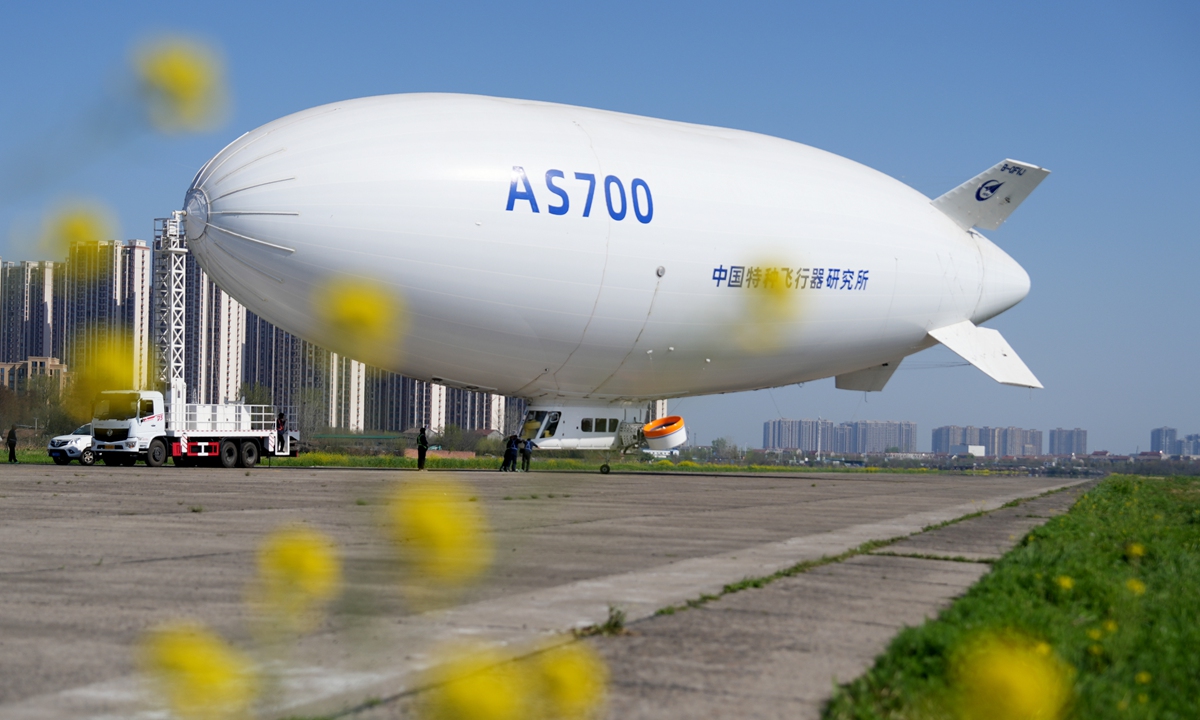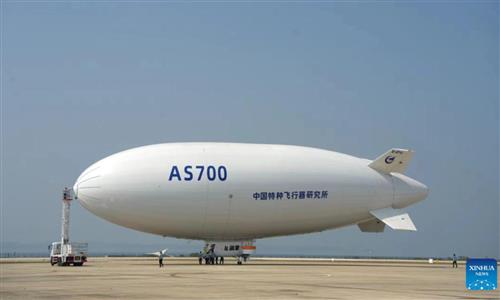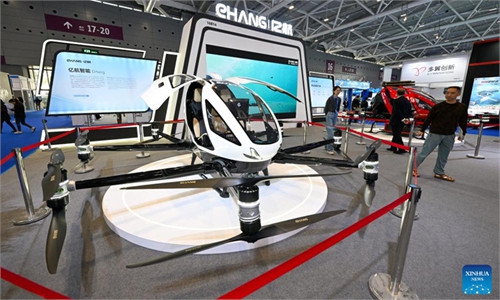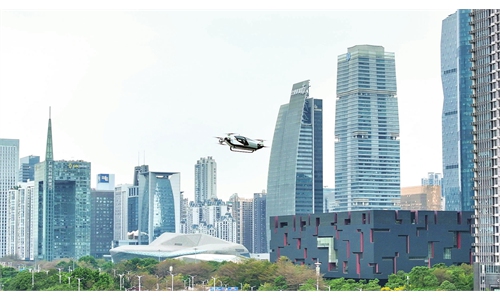
The AS700 "Xiangyun" airship Photo: Courtesy of the Special Vehicle Research Institute under the Aviation Industry Corporation of China
China's first self-developed civil airship, the AS700 "Xiangyun", completed its first trial flight between two airports in Central China's Hubei Province, laying a foundation for further long-distance test and commercial operation in assisting the development of low-altitude economy.On Saturday, the AS700 took off from an airport in Jingmen, and completed a 180-kilometer-round flight, stopping at an airport in Jingzhou city, with a total flight hour of more than three hours, the Special Vehicle Research Institute under the Aviation Industry Corporation of China, the developer of the airship, told the Global Times on Sunday.
Zhou Lei, chief engineer for the AS700 research program, said that the trial flight verified AS700's functions of air-ground communication, loaded equipment, and take-off and landing in different places.
"The trial flight also tested the capabilities for maintenance and research teams, which provided experience for trail flights with longer distance and duration times in future," Zhou said.
The AS700 airship can carry up to 10 people on board, including the pilot. It has a maximum take-off weight of 4,150 kilograms, a longest flight range of 700 kilometers, a maximum endurance of 10 hours, and a top speed of 100 kilometers per hour.
The Government Work Report of 2024 approved during the two sessions in March stated that China will foster new growth engines such as the low-altitude economy. Observers said the AS700 airship may embrace good development opportunities.
In December 2023, the Civil Aviation Administration of China issued an airship type certificate for the AS700.
"Some tourism platforms and tourists sites in China have contacted us to discuss future collaboration. We have received 20 intention orders AS700 and the first one is estimated to be delivered as the end of this year," said Du Wei, program manager of AS700 airship, noting that it will be used in emergency rescue and urban public services, in order to boost the development of the low-altitude economy.
Global Times



